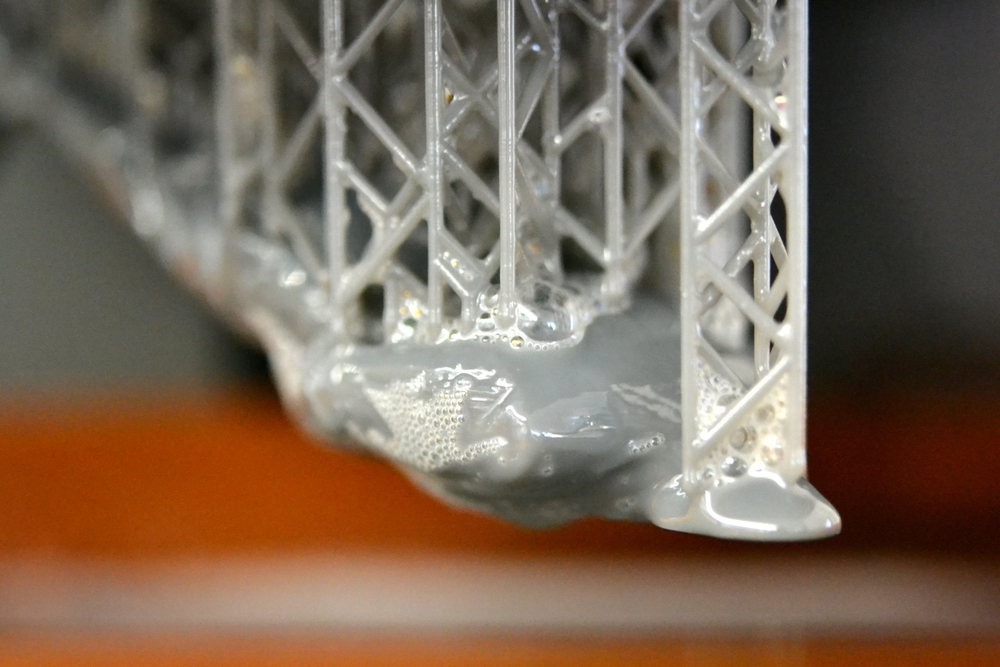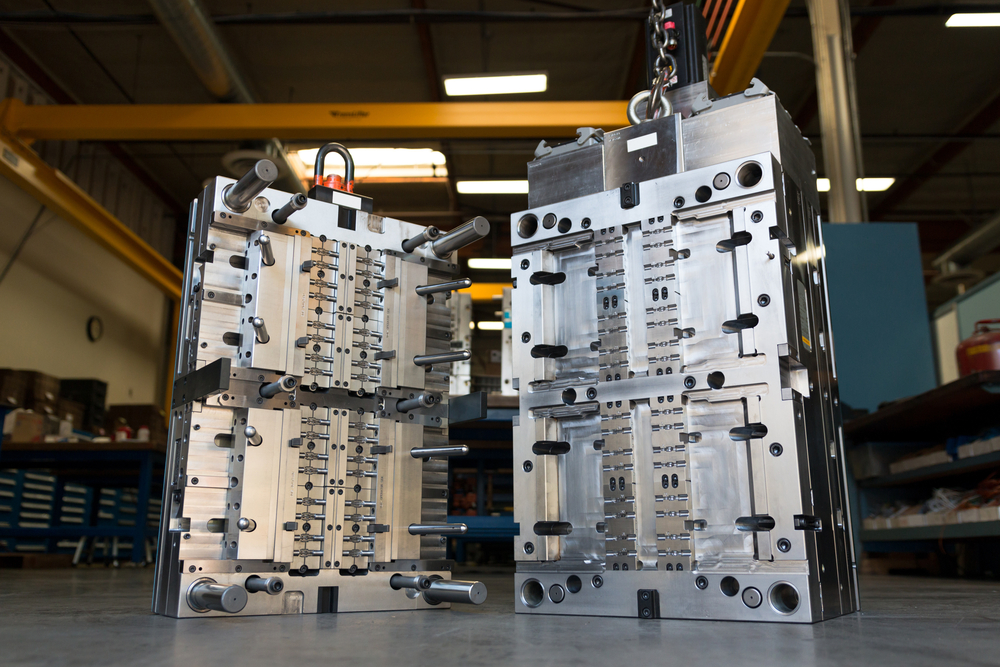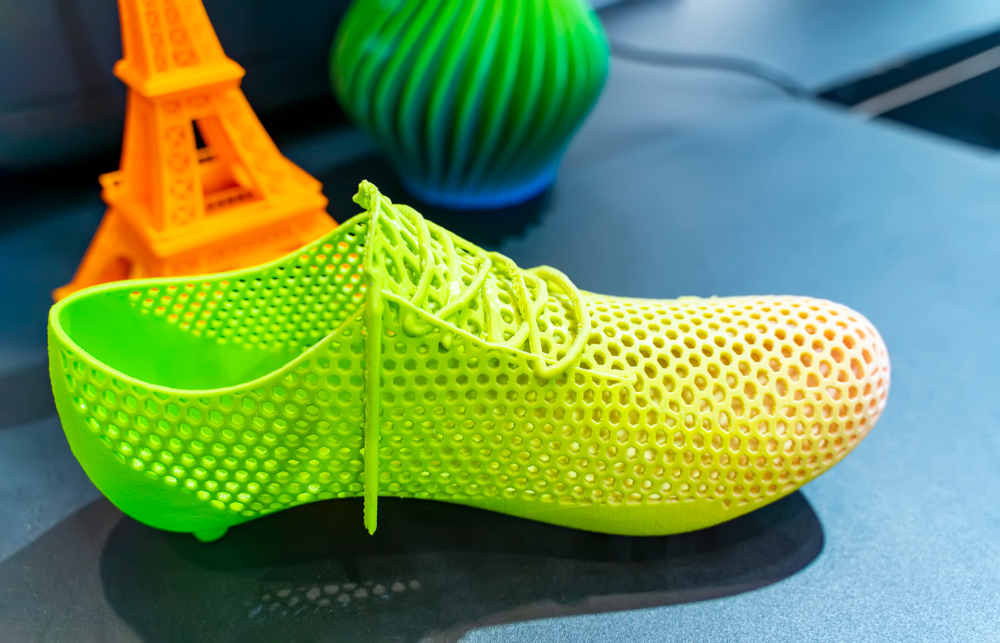
3D printing is often seen as a fast prototyping solution, not manufacturing high volume or finished products. Manufacturing production-grade parts in aerospace for almost two decades, 3D printing processes are now used in many industries to manufacture everything from dental products, footwear, and high-end cosmetic applicators. 3D printing dramatically simplifies the manufacturing process while changing the cost structure behind the design, prototyping, testing, and full-scale production.
Traditionally, a 3D printing process supported only functional prototypes or finished products. With advancements in 3D printing technologies and materials, the same machine and 3D printing process can produce prototypes and finished products. To scale, connected 3D printers can seamlessly print the same product at a 3D printing smart factory, making it easier to get a new product onto a production line for high volume manufacturing. Here’s an overview for getting a design into high-volume production with 3D printing.
From Idea to Product with 3D Printing Process
Scaling up manufacturing for a product goes through four general steps: design, testing, production, and scaling. 3D printing accelerates products from design through production and scaling.
Design: Test a Proof-of-Concept and Test Prototypes
3D printing makes it easier and faster to build prototypes and test proofs-of-concept. For example, companies can quickly test whether a new structural design meets criteria such as strength or rebound requirements or print the complete model to evaluate fit and aesthetics. With rapid prototyping, companies can do many more cycles.
With advancements in 3D printing technologies and materials, prototypes can be made with similar or the same model, materials, and capabilities.

If the prototypes are designed and produced with the same 3D printing process and materials used for production, major design changes can be avoided when preparing to scale. Contrast this with traditional processes, where the prototype needs to be redesigned to work with injection molding or CNC milling process. It also eliminates custom tooling, and full-scale production can begin with a single manufacturing process.
Testing: Evaluate, Redesign, Repeat
Testing prototypes in the field, ideally with target customers, can increase product success. Getting early and direct feedback allows companies to incorporate customer input into design changes to improve a product’s fit, form, and function.

The flexibility of 3D printing processes allows design changes and the printing of new prototypes with greater ease. Multiple versions of the same prototype can be printed for comparison without modifying the printer between each printing run, providing greater freedom for designers to iterate.
Scaling Manufacturing with 3D Printing
Smart Factory Connected 3D Printers
When preparing for high volume production, using 3D printing for prototyping and production enables more predictable and successful scaling.
With traditional processes, once it’s time to start scaling, products are often redesigned for full-scale production. It’s not always easy to redesign a product to align with traditional manufacturing processes. During the redesign – form, fit, and function may need to be sacrificed to ensure manufacturability, high yield, or throughput. Custom tooling must also be designed and manufactured and may require adjustments during production test runs – lengthening the process.
3D printing eliminates tooling and simplifies manufacturing processes. The same design, materials, and 3D printing process can be used for both prototyping and production stages – reducing or eliminating production test runs. Leading 3D printing companies are providing 3D printers that are connected to smart factories. The company uses the local 3D printer to test design iterations. Once the design is finalized, they can print the product at a smart factory, accessing instant scalability. With smart factory cloud-connected 3D printers, designs printed locally will be the same as the 3D printing smart factory products.
Outsourcing Manufacturing
Companies with ready in-house designs that have not leveraged 3D printing or do not want to build a factory can partner with a 3D printing company that offers a printing service or work with a 3D printing service provider. Before a design is put into full-scale 3D printing, it will need to pass a printability assessment to determine:
- Feasibility: This is a standard part of any design review, both for traditional production and 3D printing. It’s much easier to pass this portion of the design review when the product is designed to take advantage of 3D printing processes.
- Required design modifications: Different 3D printers and processes are designed for different materials and designs. A design might need slight changes to be made ready for scalable printing, such as mechanical supports.
- Part consolidation: When a design can be consolidated into fewer parts, assembly steps and costs can be reduced or eliminated.
How a 3D Printing Partner Aids Scaling
A 3D printing partner can do more than just provide a printability assessment. 3D printing services can help design and scaling processes by producing prototypes, identifying design changes to increase yield, and ensuring scalability. They can also de-risk the transition to high-volume production using the same printing process for prototyping and full-scale manufacturing.
Trying to scale up manufacturing can be difficult and capital-intensive with traditional manufacturing processes. If you want to design your product for 3D printing, LuxCreo’s LEAP (Light Enabled Additive Production) 3D printing process and systems can quickly and efficiently take your company from innovation to production. It provides low volume and high volume manufacturers in various industries an on-demand option for high throughput 3D printing.
To learn more about scaling up manufacturing with 3D printing, visit our contact page or call (650) 336-0888.
